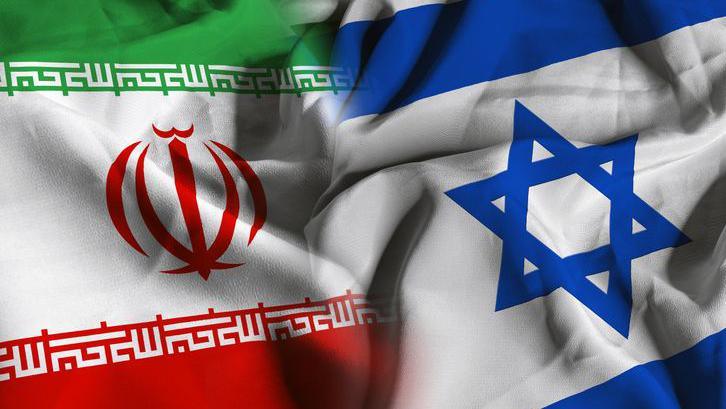A Regime Unmasked: How Iran’s Nuclear Lies and Paranoid Purges Reveal a State in Collapse

A Regime Unmasked: How Iran’s Nuclear Lies and Paranoid Purges Reveal a State in Collapse
A cascade of recent events, including the banning of UN nuclear inspectors and a series of high-profile state funerals, has intensified international scrutiny of Iran’s nuclear ambitions, presenting a stark contradiction to Tehran’s long-standing narrative of a peaceful program. The developments, confirmed by state media and independent observers, have exposed profound intelligence failures and triggered a severe internal crackdown, raising new questions about the stability of the regime and the true nature of its atomic activities.
An End to Ambiguity
Any pretense of a division between Iran's civilian nuclear efforts and its military apparatus appeared to be deliberately dismantled by the state itself in recent days. Iranian state television broadcast massive, choreographed state funerals for top Islamic Revolutionary Guard Corps (IRGC) and Artesh commanders, including high-ranking figures like Salami, Hajizadeh, and Bagheri. Uniquely, these military leaders were mourned alongside named nuclear scientists. State-controlled media reports explicitly described the deceased as “martyrs of a single cause,” publicly cementing a link the regime has officially denied for decades.
For years, Tehran has insisted to the world that its nuclear program is exclusively for energy production and medical isotopes. This public merging of its top military command with its nuclear scientists in a shared martyrdom narrative directly challenges that core message. While Iranian officials continue to issue statements claiming their nuclear enrichment is for “peace purposes,” international analysts note that the regime's own propaganda now tells a different story. The televised spectacle provided visual evidence for what Western intelligence agencies have long assessed: that Iran’s nuclear program and military ambitions are deeply intertwined.
A Program in the Shadows
The regime’s credibility has been further damaged by its abrupt decision to dramatically curtail international oversight. Officials in Tehran confirmed they have banned the chief of the International Atomic Energy Agency (IAEA) and ordered the removal of all UN surveillance cameras from its nuclear facilities. In a stunning public admission, the government blamed this move on a “catastrophic” Israeli intelligence breach that resulted in the theft of “sensitive facility data.” Analysts contend this explanation is a double-edged sword for the regime, serving as both a confession of its security apparatus’s incompetence and a transparent effort to shield its ongoing nuclear work from inspectors.
This deliberate blackout coincides with independent analysis confirming the destruction of a critical piece of nuclear infrastructure. A report from the Institute for the Study of War (ISW), citing satellite imagery, confirmed that recent strikes destroyed the Uranium Metal Conversion Plant at the Esfahan Nuclear Technology Center. The military analysis from ISW described the facility’s purpose as uranium metallization, a process it identified as “one of the last steps required to form the explosive core of an atomic bomb.” The destruction of a facility with such a clear link to weaponization, followed by the immediate expulsion of UN monitors, has been interpreted by many as proof of intent. The move is made more alarming by the IAEA's standing concern over a 408kg stockpile of uranium enriched to 60% purity—enough material for more than nine bombs—whose current location remains unknown to the agency. Despite the damage, IAEA Director General Rafael Grossi warned that the threat is far from neutralized, stating Iran retains the capacity to restart enrichment for a bomb in “a matter of months.”
Cracks in the Citadel
The image of an invulnerable, defiant state has been shattered by the regime’s own state-controlled media. In what observers called a humiliating display of weakness, Iranian television aired an interview with Ali Shamkhani, a close and senior aide to Supreme Leader Ali Khamenei. Shamkhani appeared frail and visibly injured, relying on a walking stick and a breathing aid. During the broadcast, he explicitly confirmed that his home was destroyed in a precision strike, a fact the regime had previously sought to obscure. While the interview may have been intended to project resilience, security experts argue it served as a powerful confirmation of the regime's inability to protect its own inner circle from penetration and attack.
This vulnerability extends to the state's most fortified locations. In another admission, Iran’s judiciary confirmed that a recent Israeli strike on the notorious Evin prison complex, a symbol of the regime's power, resulted in the deaths of 71 individuals. The successful targeting of both the home of a top official and the heart of its political prison system has demonstrated a level of internal fragility the regime can no longer hide from its own people or the world.
A Season of Scapegoats
Facing catastrophic security and diplomatic failures, the Iranian regime has turned inward, launching a vicious campaign of internal repression to deflect blame. State media outlets have begun to openly endorse what they call a “season of traitor-killing,” celebrating the speedy executions of citizens accused, often with little evidence, of spying for Israel. Human rights organizations report this has been accompanied by a new and coordinated wave of persecution against the country's religious minorities. Iran’s small Jewish community and the long-oppressed Baha'i faith have been increasingly targeted in state media narratives, publicly scapegoated as a fifth column responsible for the state’s security failures.
Observers of the region note that this pattern of escalating paranoia and violent purges is a classic tactic of a weakened authoritarian state. By manufacturing internal enemies and stoking sectarian fear, the regime seeks to create a distraction from its inability to secure its borders, protect its leadership, or conceal the true nature of its nuclear ambitions. As the debate continues, the international community is left to weigh the regime’s assurances of peace against the mounting, and now public, evidence of its military intent and internal decay.